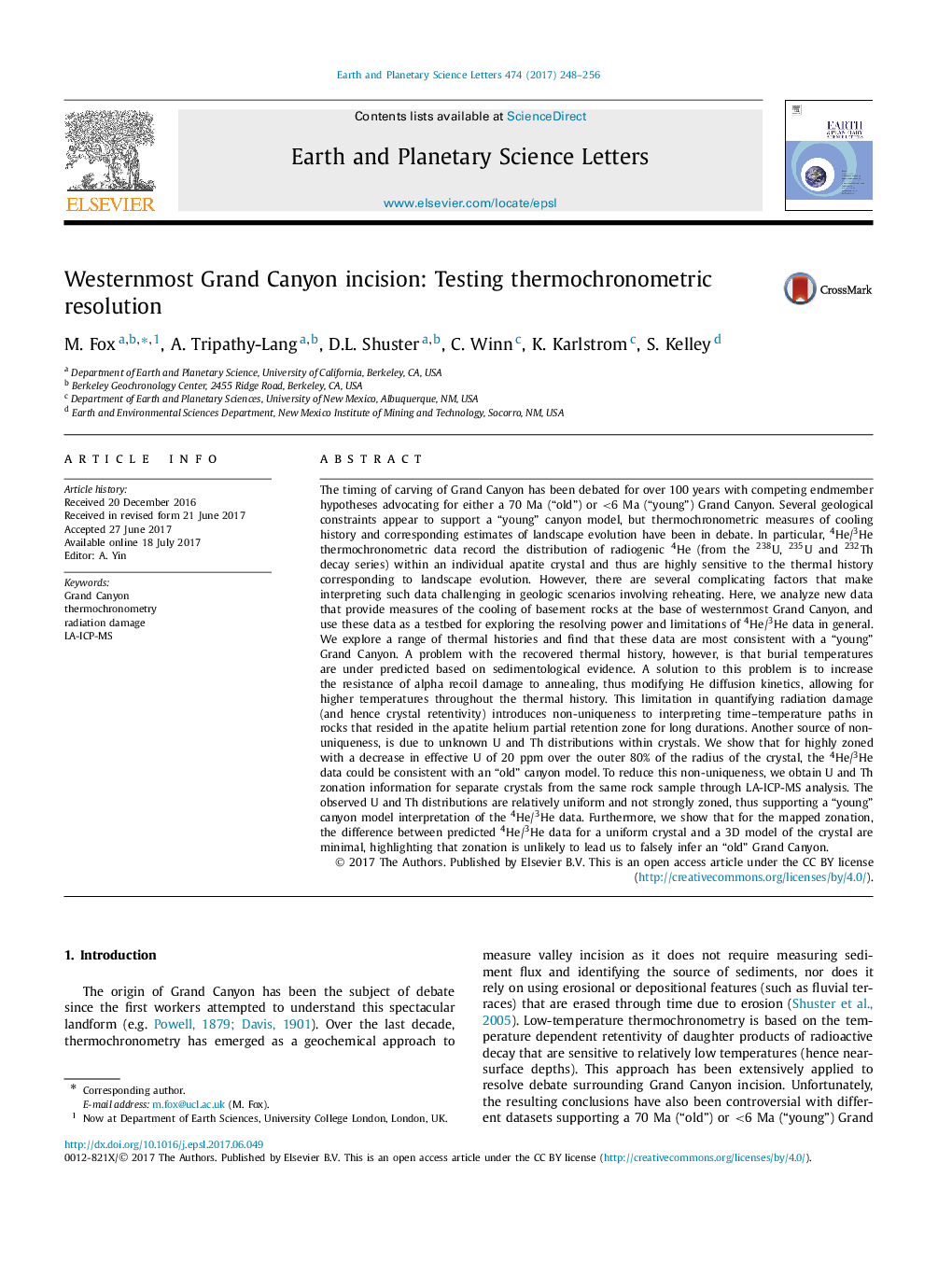| Article ID | Journal | Published Year | Pages | File Type |
|---|---|---|---|---|
| 5779761 | Earth and Planetary Science Letters | 2017 | 9 Pages |
â¢High precision thermochronometric data constrain the carving of the Grand westernmost Canyon to within the last 6 Ma.â¢Apatite zonation data exclude the possibility of an “old” canyon model.â¢Different thermochronometric constraints can be honored by modifying the radiation damage control on He diffusivity.
The timing of carving of Grand Canyon has been debated for over 100 years with competing endmember hypotheses advocating for either a 70 Ma (“old”) or <6 Ma (“young”) Grand Canyon. Several geological constraints appear to support a “young” canyon model, but thermochronometric measures of cooling history and corresponding estimates of landscape evolution have been in debate. In particular, 4He/3He thermochronometric data record the distribution of radiogenic 4He (from the 238U, 235U and 232Th decay series) within an individual apatite crystal and thus are highly sensitive to the thermal history corresponding to landscape evolution. However, there are several complicating factors that make interpreting such data challenging in geologic scenarios involving reheating. Here, we analyze new data that provide measures of the cooling of basement rocks at the base of westernmost Grand Canyon, and use these data as a testbed for exploring the resolving power and limitations of 4He/3He data in general. We explore a range of thermal histories and find that these data are most consistent with a “young” Grand Canyon. A problem with the recovered thermal history, however, is that burial temperatures are under predicted based on sedimentological evidence. A solution to this problem is to increase the resistance of alpha recoil damage to annealing, thus modifying He diffusion kinetics, allowing for higher temperatures throughout the thermal history. This limitation in quantifying radiation damage (and hence crystal retentivity) introduces non-uniqueness to interpreting time-temperature paths in rocks that resided in the apatite helium partial retention zone for long durations. Another source of non-uniqueness, is due to unknown U and Th distributions within crystals. We show that for highly zoned with a decrease in effective U of 20 ppm over the outer 80% of the radius of the crystal, the 4He/3He data could be consistent with an “old” canyon model. To reduce this non-uniqueness, we obtain U and Th zonation information for separate crystals from the same rock sample through LA-ICP-MS analysis. The observed U and Th distributions are relatively uniform and not strongly zoned, thus supporting a “young” canyon model interpretation of the 4He/3He data. Furthermore, we show that for the mapped zonation, the difference between predicted 4He/3He data for a uniform crystal and a 3D model of the crystal are minimal, highlighting that zonation is unlikely to lead us to falsely infer an “old” Grand Canyon.
